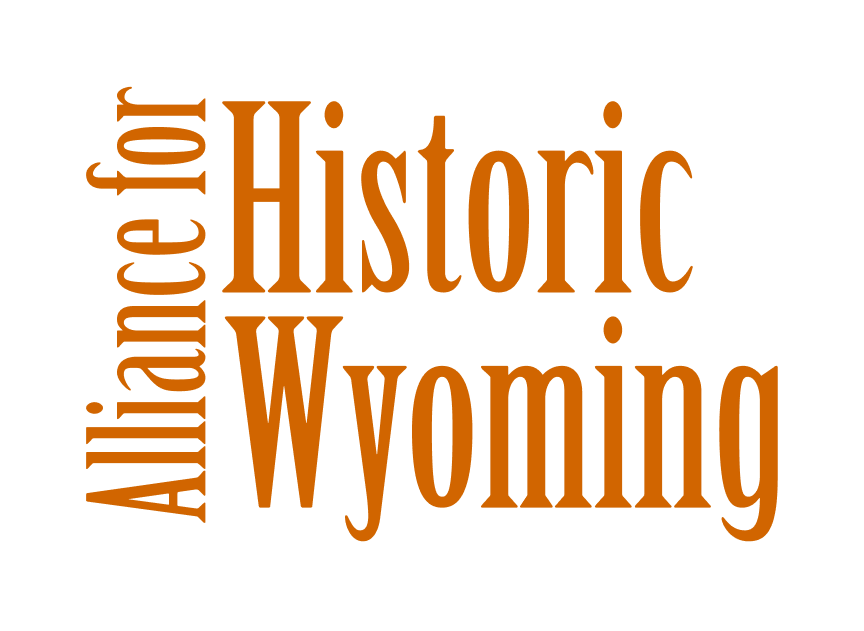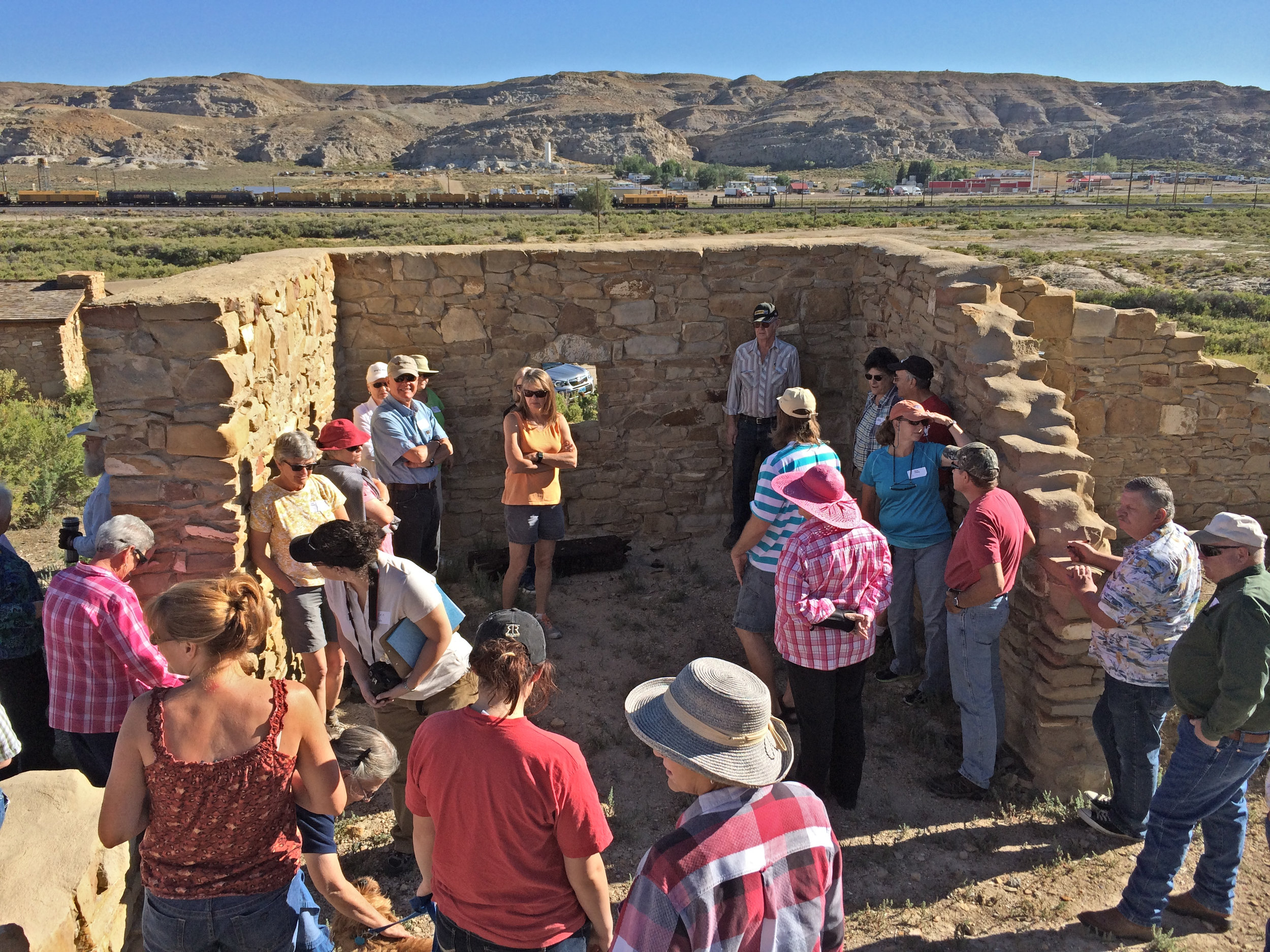*We are in the midst of our fall fundraising drive. If you enjoy our weekly historic places and spaces stories, please consider donating to the Alliance for Historic Wyoming! Every little bit helps. Donate now
By Trish Ullery-Whitaker, AHW Board Member
February 22, 2017
Officially closed on February 1, 1946, the Douglas, Wyoming prisoner of war camp that housed Italian and German P.O.W.’s during WWII represents an interesting chapter in the history of our state. Located on 687 acres of land acquired by the Federal Government, construction of 180 buildings began early in 1942 and the first Italian prisoners began to arrive in August of that year.
The Officers Club was constructed in the spring of 1943 and today is one of the few remaining buildings. After the war, Spiegelberger Lumber and Building Company of Laramie dismantled 137 buildings and the rest were sold as surplus inventory. The Douglas Community Country Club acquired the Officers Club and saved it from destruction. The interior walls of the club are painted with sixteen large, colorful murals—most of them 6 feet tall– by three of the Italian prisoners who today are known only by their signatures on the mural: V. Finotti; E. Tarquinio; and F. DeRossi. The murals have been identified as copies of western paintings by William Henry Jackson and Charles Russell. The Club was placed on the National Register of Historic Places September 8, 2001.
In 2012, Camp Douglas was acquired by Wyoming State Parks & Cultural Resources. Work was begun to stabilize the facility and the Alliance for Historic Wyoming (AHW) staged an “Unbarred” event attended by nearly 100 guests on April 14, 2012 to invite the public to view the murals before the facility was closed completely for restoration.
Today, the Officers Club at Camp Douglas is one of three important historic sites in the Douglas area which are open to the public and include Fort Fetterman just north of town and the Pioneer Memorial Museum located at the fairgrounds. Mel Glover, superintendent of the museum, manages the properties and reports that preservation work at the Club is ongoing and additional collections will eventually be housed there. The Club is open on a limited basis by reservation during the winter months and has regular hours during the summer.
LIKE WHAT YOU JUST READ?
- Browse our archive of Historic Places and Spaces Profiles by clicking here.
- To learn about all of our campaigns and initiatives, click here.
- Subscribe to our newsletter to learn more about what’s going on in Wyoming.
- Donate or become a member to help us produce stories, organize events, and be a voice for preservation across the state.
- Like us on Facebook, and follow us on Twitter and Instagram to see our latest updates!











5 Comments
byKay
Very interesting. I’ve been to Fort Cetterman. I’d like to see this too.
byTom Hill
After the war one of the remaining buildings became the hospital for a while. I was born there in Decimber of ’46, delivered by my mom, Gladys Graves Hill ,with assistance from Dr. William Heinriehs ( whose son Wm. Jr. also became an MD I believe . ) I do not know how long it remained the Douglas hospital, not too many years- before the new hospital was completed. It is still the hospital in Douglas. The officers club mentioned above with the murals on the wall became a community center for many years with pot luck every other Thursday & men’s night with poker on alternative nights. I recall being there one evening & after pot luck they had bingo & I won maybe 7 or so of the games played ! ( I used the money to buy a telescope which I still have – ) I seem to recall some of the adults becoming a bit put out at my winnings ~
PS – Kay, it is Fort Fetterman which is located several miles from Douglas & has an interesting history .
byAlliance for Historic Wyoming
Tom – thanks for sharing your story. I love your personal connection to the camp. It adds another layer of meaning and significance to the site. I know our members and followers would really enjoying hearing your story. Would you be willing to let us share it with them? Thanks!
byMary Dougherty
My grandmother, who spoke some German, spent time at the camp during the war. I regret that I do not recall what she did when she was there. She loved to tell the story of two prisoners who escaped the camp. They were caught–I think near Orin Junction. Since they had traveled a distance, they asked what state or country they were in. Told they were still in the same county, she quoted them as saying, "Mein Gott, how big is this country?"
byAlliance for Historic Wyoming
Mary – thank you so much for your story. These kinds of connections with historic places and spaces are what make history come alive! Would you be willing to let us share your story with the rest of our followers?
Comments are closed.